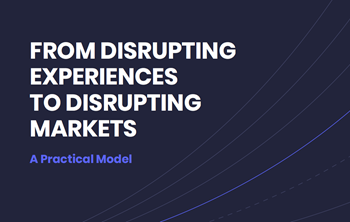Before making the decision to adopt a D2C channel, here are four things manufacturers should keep in mind.
1. Why D2C and why now?
Traditionally, businesses themselves would only be responsible for the production, design, and in some cases marketing of a product, leaving the floor open for multiple intermediaries to come in and cut into general profit margins.
D2C businesses have a different approach: taking care of everything from design and production to sales, encompassing the whole process from birth to death. This way, the control is with the business, taking responsibility for the entire customer experience, ensuring consistency, and walking away with significantly more profits to gain.
Due to COVID-19, physical sales channels failed, which strained other online channels. This left businesses with a choice; rely on their online shopfront to carry them through or prioritize the most important online channels themselves. As a consequence, the D2C strategy became a lifeline for many businesses during the initial lockdown. The lense shifted off of wholesalers and brick-and-mortar high street stores and onto the online marketplace. This caused a leap in online transactions, with global eCommerce jumping to $26.7 trillion.
With this spike in online retail transactions, businesses needed to become more consumer-centric, which meant a need for consumer insights. This proved a challenge for some as CPG companies have not typically had access to an in-depth consumer data source. By embracing the D2C model, these same companies are rewarded with first-party data, a key component in creating the new normal - an engaging brand experience.
2. When is the best time for a business to shift into D2C - and is it suitable for every business?
There are a whole host of reasons for a company to pursue a D2C strategy. For many businesses, the ability to gather data on their consumers and generate insights is invaluable. D2C, as discussed above, also has the benefit of eliminating the middleman, thereby creating a more efficient and profitable sales channel.
3. What hurdles do businesses face when shifting to a D2C model?
In reality, putting a D2C strategy into practice requires an entirely new skill set that can be unfamiliar ground for many, with a steep learning curve. Services are available to help D2C brands with possible teething issues, such as logistical problems, transaction management, and distribution. Using these services can dramatically reduce the time it takes to launch, preventing gaps in income and 'dead air'; as you progress, you can begin to bring these functions back in-house.
Meanwhile, you can focus on your branding, forming connections with your new customers based on the values of your business. The end goal is to ascertain emotional engagement with all of your customers.
To do this, embracing omnichannel communication strategies is essential – getting engagement on both social media and traditional media conduits. Customers need to hear stories and narratives that set you apart from the gray-faced masses. In doing this and maintaining engagement, you’ll ensure customers keep coming back – buying into you as well as buying from you.
When considering a D2C model, your product proposition may need to be altered. Some styles of products will suit D2C better than others, with many D2C's choosing to 'category creep' to remain profitable. When a business 'category creeps', they increase their span of products to stay relevant; for example, Casper the mattress brand has constantly evolved and now sells a range of products encompassing the more extensive 'sleep' niche such as night lights and sheets.
The business may be forced to make trade-offs. Businesses that shift to D2C models will often maintain their traditional models or return to them if the venture isn't as positive as predicted. Just as this new consumer age can work with you, it can work against you. As a manufacturer, you have to accept the now rapidly cycling trends of consumption and embrace this to succeed. However, it’s challenging to meet the demands of both contrasting customer types. In many cases, issues like these only become apparent over time, but it's essential to consider them in the business's infancy to prevent severe repercussions.
4. Shifting for the long-term gain
It’s unwise to plan this change as a temporary fix. Beyond the direct influence of COVID-19, your business must remain viable. The pandemic may have been the driving force for this trend, causing you to consider it for your company, but making the shift successfully will require more commitment than treating it as a short-term solution. If it’s seen as something less long-term, this will reflect in the results, inevitably losing a whole customer base.
To conclude, it’s essential for your business to ask the following:
- What are the basics, and how will they be achieved? Decide how practical demands such as website optimization, payments, and distribution will be fulfilled and whether this is financially viable for your business.
- Which channels will be targeted? Select the most suitable channels for your distinct brand voice and product.
- What is unique about your business? Identify what values and messages make your brand extraordinary, and how you can ensure this voice is heard.
- How can this shift be made without disrupting current customers? Figure out how to ensure current clients remain loyal to your brand - and whether this change will negatively impact them.
- How will you positively exploit data? Utilize data and insight to understand how customers respond to your efforts to connect.
Leaping to a D2C model might just be the lifeline your business needs, but risks must be considered as with any drastic decision.
Access the latest business knowledge in Marketing
Get Access




Comments
Join the conversation...